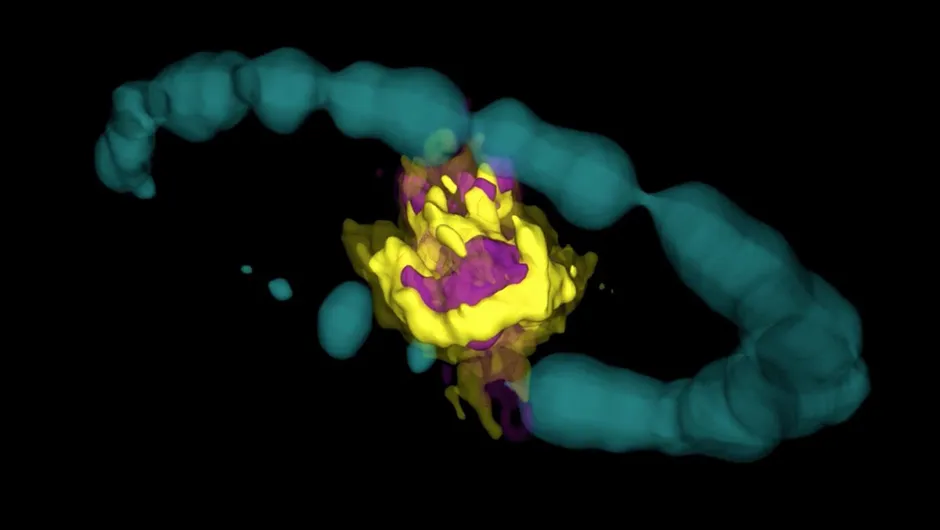A diverse selection of molecules has been found in the centre of an exploded star for the first time ever by a group of researchers.Formylium (HCO+) and sulphur monoxide (SO) were discovered in the aftermath of Supernova 1987A.
This explosion was first witnessed in 1987, hence the name, and is in a neighbouring galaxy 163,000 lightyears away.
Supernovae are massive stars; at least ten times the size of the Sun, at the end of their stellar evolution, that catastrophically explode.
The blast is triggered when gravity wins over the outwards force from burning fuel in the core and material is then propelled out into space.
Previous thinking was that the violent explosions of supernovae would destroy many molecules within them that could form new stars.
However, these findings suggest a new possibility.
"This is the first time that we've found these species of molecules within supernovae, which questions our long held assumptions that these explosions destroy all molecules and dust that are present within a star," says Mikako Matsuura, from Cardiff University's School of Physics and Astronomy, and lead author.

"Our results have shown that as the leftover gas from a supernova begins to cool down to below -200°C, the many heavy elements that are synthesised can begin to harbour rich molecules, creating a dust factory.
What is most surprising is that this factory of rich molecules is usually f ound in conditions where stars are born.
The deaths of massive stars may therefore lead to the birth of a new generation."
Since its discovery, astronomers have studied Supernova 1987A but until recently found it difficult to analyse the innermost core due to intervening dust and gas.
This study used the Atacama Large Millimeter/submilimeter Array (ALMA) to probe the centre, by analysing millimetre wavelengths between infrared and radio waves, which allowed them to see further into the explosion.
"The ALMA observations of molecules such as silicon monoxide in Supernova 1987A have enabled isotopic abundance ratios to be measured for the first time in supernova material, allowing comparisons to be made with models for the explosive nuclear reactions that take place in such supernovas,” says Mike Barlow, one of the team members involved in the observations, from University College London.
An accompanying paper also used ALMA’s data to create a 3D model of Supernova 1987A, revealing insights into the star and how supernovae could make the basic building blocks of stars and planets.
Looking to the future, the team hopes to figure out how abundant these rare molecules are and to see if there are any other molecules not yet detected found within the heart of these dying stars.
